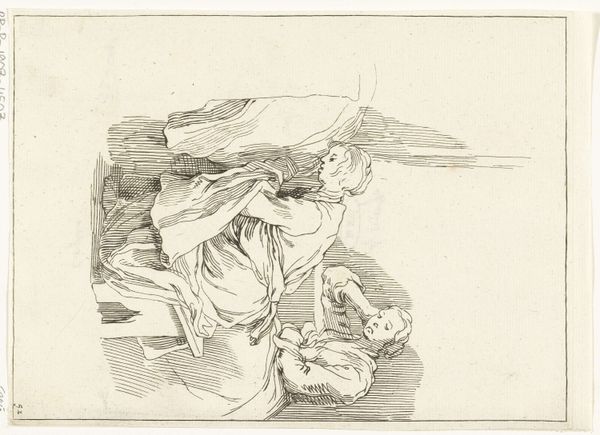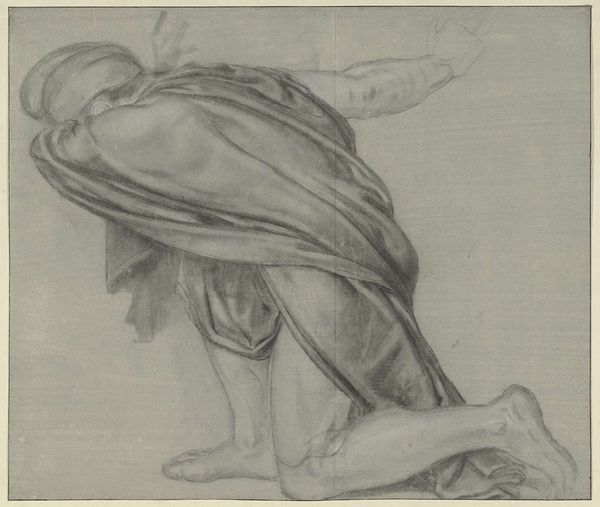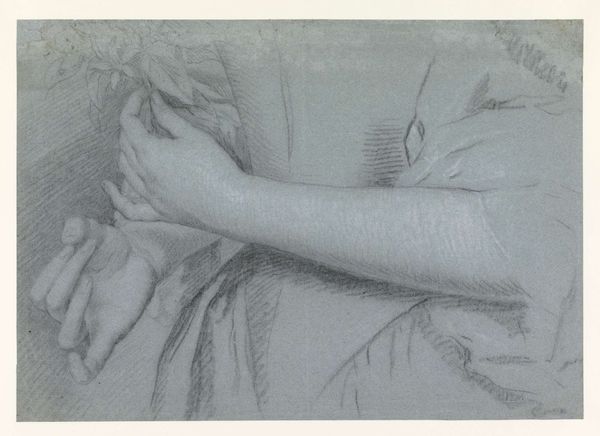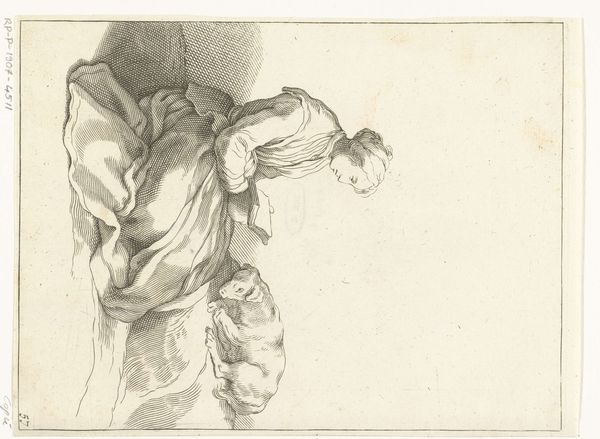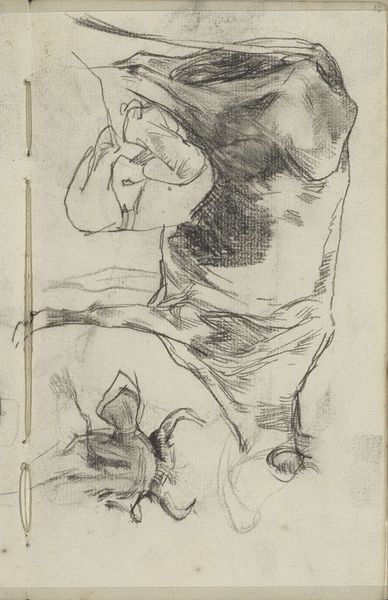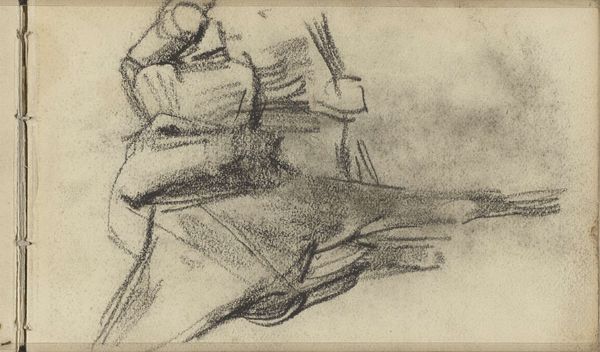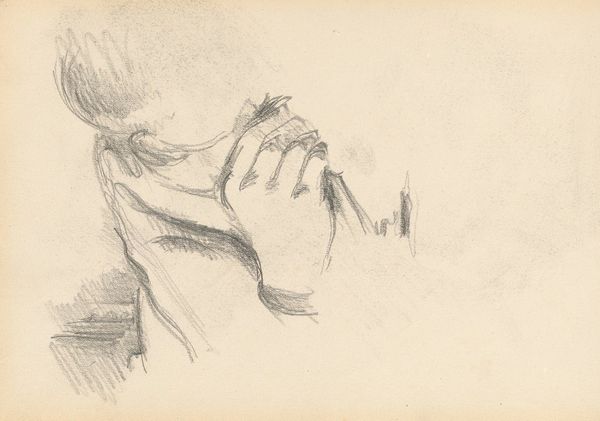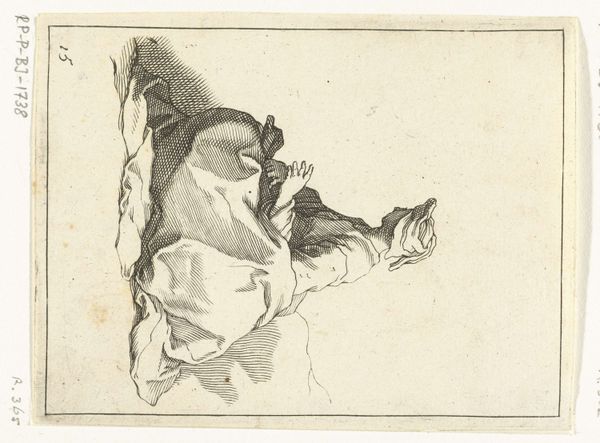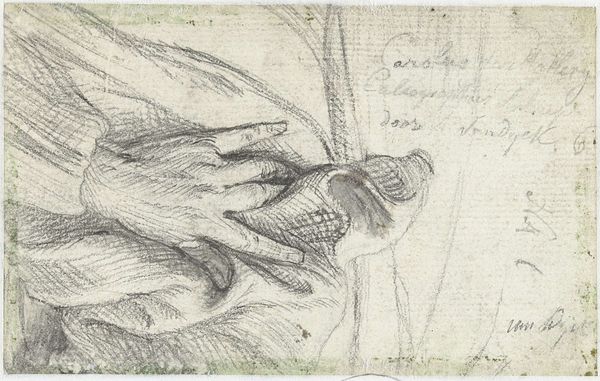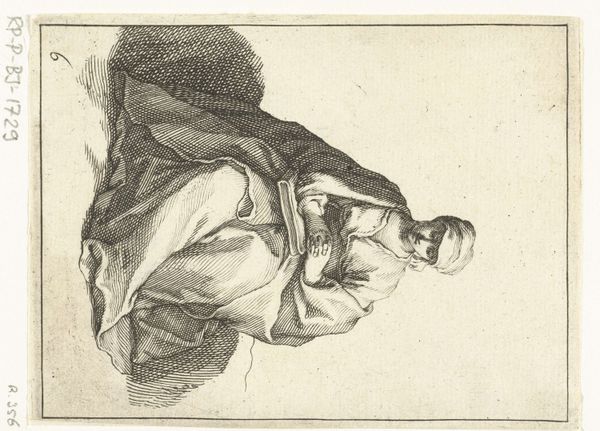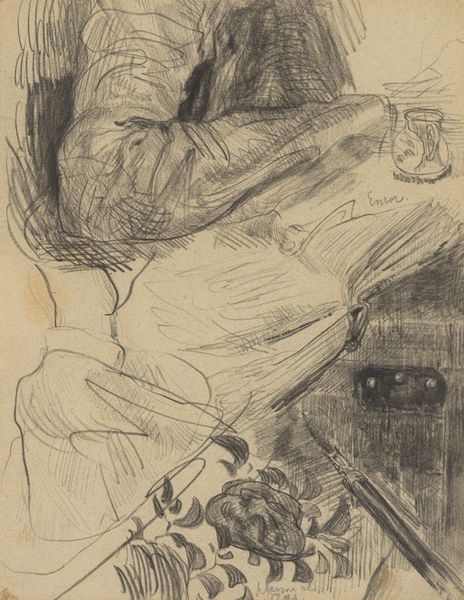
drawing, pencil
#
drawing
#
baroque
#
dutch-golden-age
#
pencil sketch
#
pencil drawing
#
pencil
#
portrait drawing
#
genre-painting
#
realism
Dimensions: height 92 mm, width 150 mm
Copyright: Rijks Museum: Open Domain
Curator: This detailed drawing, "Hands of a Rommelpot Player," comes to us from Cornelis Visscher, around 1654 to 1658. Visscher, a prominent figure in the Dutch Golden Age, created this study using pencil. Editor: Oh, interesting! The drawing itself, in terms of subject, looks very unassuming at first, right? But the energy! The hands seem frozen in mid-motion, like the drawing’s trying to capture sound through sight. Curator: That’s insightful. The Rommelpot was a type of folk instrument. Often played during festivals. The picture alludes to the lives of ordinary people, their musical celebrations, and community experiences. Editor: I love how much Visscher achieves with just a pencil. The varying pressure creates such a sense of depth and texture. You can practically feel the roughness of that rommelpot and the tension in those hands. It’s so simple and yet incredibly evocative. Curator: Absolutely, and we must consider where works like these are displayed – or perhaps *weren’t* displayed. Drawings served practical and preparatory functions at the time; they offered the artist the opportunity to solve problems of representation for paintings or engravings. It suggests a vibrant visual culture. Editor: It does! Knowing this was a preparatory work casts the final pieces – like this simple pencil sketch – in an unexpected, almost vulnerable, light. Like a painter thinking aloud. Beautiful! Curator: Precisely. It’s a reminder of the creative process behind the polished finished product. Thanks for highlighting that today! Editor: My pleasure! The way art reveals itself layer by layer keeps me hooked, every time!
Comments
No comments
Be the first to comment and join the conversation on the ultimate creative platform.
